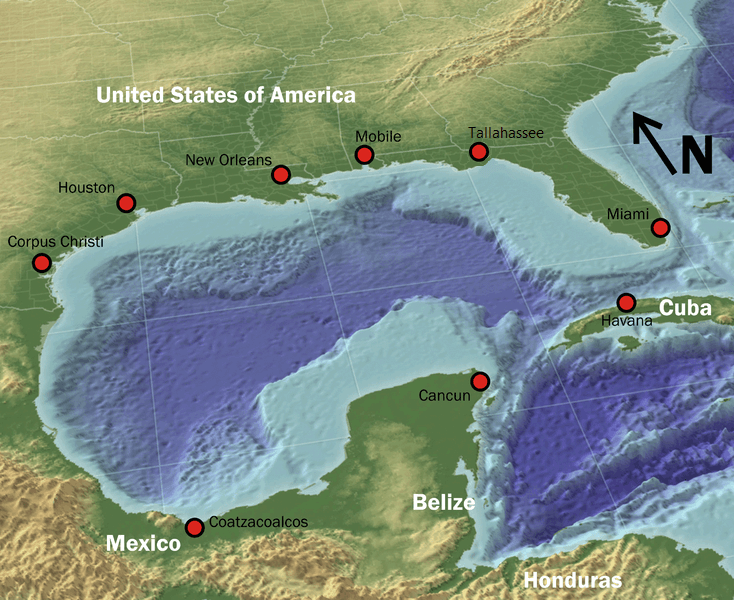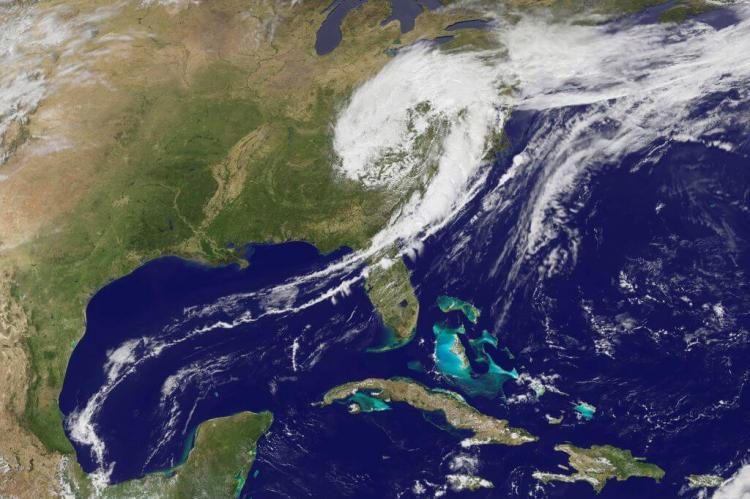Exploring the Gulf of Mexico: An Ocean Basin of Diversity and Importance
The Gulf of Mexico is an oceanic rift basin and marginal sea of the Atlantic Ocean with a wealth of natural wonders and ecological significance. The US Gulf Coast borders the Gulf in the north, Mexico and the Yucatán Peninsula border it to the southwest and south, and Cuba to the southeast.
Exploring the Gulf of Mexico: An Ocean Basin of Diversity and Importance
The Gulf of Mexico is a testament to the intricate geological processes that have shaped our planet over millions of years. Spanning approximately 1,550,000 square kilometers (600,000 square miles), this oceanic rift basin and marginal sea of the Atlantic Ocean hold a wealth of natural wonders and ecological significance within its depths. Bordered by the southernmost portions of the North American continent, the United States Gulf Coast flanks the Gulf to the northeast, north, and northwest, Mexico and the Yucatán Peninsula to the southwest and south, and Cuba to the southeast.
Geological Marvels and Plate Tectonics
The geological history of the Gulf of Mexico dates back approximately 300 million years, with its formation primarily attributed to the movement of tectonic plates. The basin floor, approximately 1,500 kilometers (930 miles) wide, consists predominantly of sedimentary rocks and recent sediments, showcasing the region's dynamic geological evolution. The North American Plate borders the Gulf to the north and west, while the Caribbean Plate and the Cocos Plate lie to the south and east, respectively. The convergence and divergence of these plates have played a pivotal role in shaping the Gulf's unique topography and geological composition.
The Gulf of Mexico basin is further distinguished by its seven primary areas, each characterized by distinct geographical features and ecological habitats:
The Sigsbee Deep: Situated within the Gulf basin, the Sigsbee Deep is the deepest point and a testament to the basin's geological complexity. The continental rise flanks it, as does the Sigsbee Abyssal Plain and the Mississippi Cone, each contributing to the basin's diverse landscape.
Northeast Gulf of Mexico: Stretching eastward from the Mississippi River Delta near Biloxi to the eastern side of Apalachee Bay, the Northeast Gulf of Mexico encompasses a range of coastal habitats and ecosystems.
South Florida Continental Shelf and Slope: Extending along the coast from Apalachee Bay to the Straits of Florida, this area includes the Florida Keys and Dry Tortugas, showcasing a rich diversity of marine life and coral reefs.
Campeche Bank: From the Yucatán Straits in the east to the Tabasco-Campeche Basin in the west, the Campeche Bank is home to Arrecife Alacran and boasts unique geological formations and biodiversity.
Bay of Campeche: An isthmian embayment extending from the western edge of Campeche Bank to the offshore regions just east of the port of Veracruz, the Bay of Campeche is renowned for its ecological significance and natural beauty.
Western Gulf of Mexico: Spanning from Veracruz in the south to the Rio Grande in the north, the Western Gulf is characterized by its diverse coastal landscapes and vital role in supporting marine ecosystems.
Northwest Gulf of Mexico: Extending from Alabama to the Rio Grande, the Northwest Gulf encompasses a range of habitats and geological formations, contributing to the region's ecological diversity and importance.
Ecological Marvels and Natural Resources
The Gulf of Mexico is a testament to geological processes and a vibrant ecosystem teeming with life. Its diverse ecological provinces, including the coastal zone, the continental shelf, the continental slope, and the abyssal plain, provide habitat for a myriad of species and support vital ecological functions.
From tidal marshes and sandy beaches to mangrove-covered areas and estuaries, the Gulf's coastal zone is a vital habitat for waterfowl, shorebirds, and marine life. The continental shelf, primarily consisting of carbonate material such as limestone, supports a wealth of marine biodiversity, including fish populations and coral reefs.
The Gulf's waters are subject to wide variations in salinity due to the inflow from various rivers, particularly near the outflow of the Mississippi River delta region. This dynamic environment, coupled with the region's tropical to subtropical climate, fosters the development of diverse ecosystems and supports a rich array of marine life.
However, the Gulf of Mexico is not without its challenges. The region is prone to tropical cyclones or hurricanes, threatening human populations and the marine environment. Additionally, human activities such as oil and gas extraction, coastal development, and pollution have led to environmental degradation and habitat loss in some areas.
Despite these challenges, the Gulf of Mexico remains a vital ecosystem and a cornerstone of biodiversity in the North American continent. Its ecological significance, natural beauty, and rich resources underscore the importance of conservation efforts and sustainable management practices to ensure its preservation for future generations.

3D map of the Gulf of Mexico.
